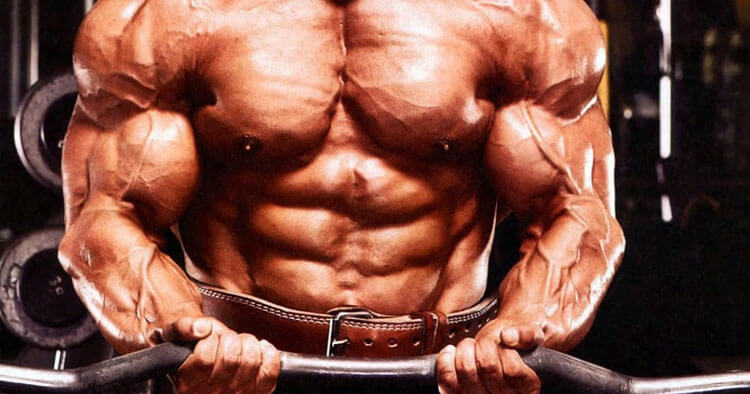Muscle Pain and Tendinopathy
Distal Biceps Tendinopathy: Anterior Elbow Pain
What is Distal Biceps Tendinopathy?
Distal biceps tendinopathy refers to the term used to describe overuse injuries to the biceps tendon at the elbow. The term distal biceps tendinosis and distal biceps tendonitis are also common terms used to describe distal biceps tendon complaints. The use of the word ‘distal’ in front of the word “biceps” indicates that the biceps tendon referred to is the tendon at the elbow, not the shoulder. The reason behind why this is significant is that there are also biceps tendons “proximal” at the shoulder joint, these proximal biceps tendons can also develop tendinopathy and therefore you can have a proximal biceps tendinopathy as well as a distal one. So for a matter of clarity with regard to anatomical location the use of the word distal, or proximal helps the reader understand if it is in this situation the elbow, or the shoulder biceps tendon that is being discussed. For the purpose of this blog when discussing biceps tendinopathy it is the elbow tendon I am referring to, a ‘distal biceps tendinopathy’.
The Biceps Brachii Muscle
The biceps brachii muscle consists of two heads (the name effectively taken from Latin with ‘bi’ meaning two and ‘ceps’ meaning head). There exist the short and long head, the short head of biceps originates at the coracoid process of the shoulder blade and the long head of biceps originates at the supragleniod tubercle at the top of the socket of the shoulder joint. The two heads of biceps meet up joining in the upper arm, where the biceps muscle then travels down the front of the arm attaching via another tendon being the distal biceps tendon to the radial tuberosity at the forearm just below the elbow joint. In some individuals their distal biceps tendon has two distinct parts, each as a continuation of the short and long heads of the muscle originating from the shoulder, in others the short and long heads of biceps blend into a common tendon on insertion below the elbow. The image below shows the two proximal heads and the variation of the two branches of the distal tendon.
Functionally at the elbow the muscular actions that the biceps can create include bending the elbow, known anatomically as elbow flexion (where the motion is moving the hand towards the mouth) and assists in the action of turning the hand over, so the palm is facing upwards, anatomically referred to as forearm supination. As well as these two movements of the elbow and forearm the biceps brachii muscle can act on the shoulder joint assisting both movements and stability of the joint, however the actions of the biceps muscle at the shoulder will not be discussed here since for the purpose of this blog we are only concerned with biceps tendinopathy at the elbow.
Causes Of Distal Biceps Tendinopathy
With contraction of the biceps muscle most frequently with elbow flexion load, tension is placed through the biceps tendon at the elbow. When tension is excessive, which may present as too much force in a single load, or repeated loads with insufficent recover time damage to the biceps tendon may occur. This single, or repetitive load can result in tearing, inflammation, or degeneration of the tendon. Such reaction in the tendon may lead to the individual experiencing pain in the front of the elbow, a pain that will frequently be aggravated by lifting objects, as well as twisting actions of the forearm.
- A distal biceps tendon injury is commonly associated with weight lifting, so your gym junkies. Specifically the main offenders with regard to loading activities that may cause a biceps tendinopathy at the elbow include biceps curls and chins ups.
Vulnerability Of The Distal Biceps Tendon And Injury
Possible predisposition of the distal biceps tendon to injury may exist as a result of relatively poor vascular supply to the tendon. Poor blood supply creates the presence of an “avascular zone” where blood supply is limited and hence tendon ability to absorb load, recover and repair is limited at this zone.
Another potential predisposition for distal biceps tendon injury, or degeneration stems from the idea of mechanical impingement (compression) of the biceps tendon. Compression to the distal biceps tendon may occur when the forearm is pronated (being the movement where the palm is turned face down towards the floor), in a pronated position the available room for the biceps tendon is reduced due to the closing space between the two forearm bones. This closing of space leaves less gap for the tendon, potentially compressing the loaded tendon when work is being done. Compression of tendons under load can lead to irritation to tendons in many parts of the body not just the elbow, the shoulder and the ankle are other areas of the body where mechanical compression of tendons commonly leads to tendinopathies and pain.
Disclaimer: Sydney Physio Clinic provides this information as an educational service and is not intended to serve as medical advice. Anyone seeking specific advice or assistance on Distal Biceps Tendinopathy: Anterior Elbow Pain should consult his or her general practitioner, sports medicine specialist, orthopedic surgeon, physiotherapist or otherwise appropriately skilled practitioner.



